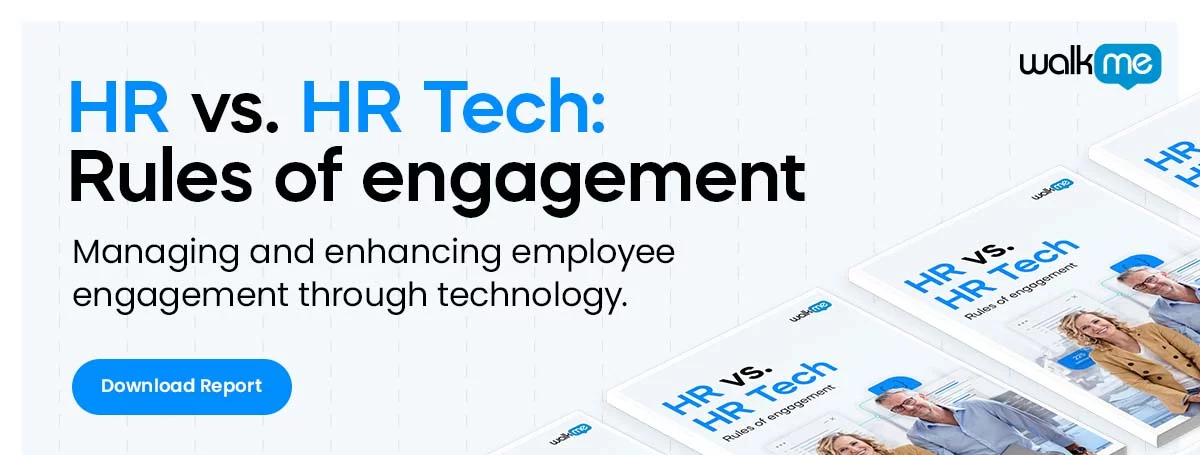
Before designing an offboarding process, it’s first necessary to have a solid offboarding definition, and it’s also necessary to understand the benefits of offboarding.
Many employers recognize the need for improving other stages in the employee experience, such as employee training and employee onboarding.
But what is the value of offboarding?
Below, we’ll answer that question, then we’ll look at the key ingredients of an offboarding process, plus a few tips for getting the most of your offboarding process.
Employee Offboarding: Definition and Benefits
Employee offboarding is a structured process applied when employees leave an organization.
The process is applied when employees leave deliberately, when they are terminated, or when other uncontrollable events result in the end of the employee’s tenure. It is a key stage in the employee life cycle, or the total employee experience – that is, the sum total of interactions an employee has with their brand.
HR departments are almost always in charge of the departure process, though other business units are also involved, such as IT, corporate security, and finance.
Having a structured departure procedure offers several benefits, such as:
- The ability to understand why employees left, which information can be used to further improve the business and the workplace
- An opportunity to make a positive impression on employees as they leave, which can improve employer branding and future recruitment efforts
- Facilitating knowledge transfer from departing employees to their replacements or to other team members
- The chance to maintain a relationship with the employee, which can result in future work, word-of-mouth referrals, and other opportunities
It is best to document this process and create an offboarding checklist to reuse whenever employees leave the company. Having a template, after all, can simplify workflows, reduce effort, and save time.
Next, we’ll cover the most important elements to include in your offboarding process.
How to Design an Offboarding Process, Step-by-Step
An offboarding process should, as mentioned, aim to accomplish several specific goals:
- Maintaining a relationship with employees
- Facilitating knowledge transfer
- Closing security holes
- Gaining insight into the company and the employee experience
- Leaving employees with a positive impression of the organization
Each step in the offboarding process, therefore, should be designed to achieve one of these aims.
Here are some of the most important steps to include in your offboarding template:
Exit Interview
To learn about why the employee left and their perception of the business, conduct an exit interview, an exit survey, or both.
An exit interview is an interview between an HR professional and the employee, conducted either in-person or online. During this interview, questions will be asked such as:
- Why are you leaving?
- How did you feel about your time at the company?
- What was your impression of management?
- Was the employee training program adequate?
- Would you recommend this company to others?
Exit interview questions should, in essence, be the opposite of job interview questions.
That is, rather than interviewing the employee about their qualifications, the interview focuses on the quality of the workplace and the organization.
Security Procedures
Cybersecurity and corporate security should be a major concern for any organization, so it is crucial to close security holes when an employee leaves an organization.
To stay as safe and secure as possible, therefore, relevant departments should close those security gaps immediately upon the employee’s departure.
This means:
- Closing IT accounts
- Changing passwords
- Returning and invalidating ID cards
- Restricting access to the business
- Wiping data
- Changing contact information and updating databases
To ensure that these actions are completed promptly, it is a good idea for HR to collaborate closely with IT by setting deadlines, using checklists, and sticking to a strict zero-trust policy. Naturally, not all employees have negative intentions when they depart – but security holes, such as open accounts and unmonitored access, should be closed to prevent intentional or unintentional problems.
Knowledge Transfer
Employees’ skills and knowledge are assets. If those assets are not preserved, then it represents a loss of investment.
Transferring that knowledge to other coworkers is therefore essential, regardless of whether those coworkers are team members or replacements.
To accomplish this, consider having the departing employee:
- Standardize business processes
- Train their replacements one-on-one
- Document workflows
- Contribute to the internal knowledge base
- Use tools such as DAPs to create walkthroughs
HR professionals who systematize the process of knowledge transfer can, in short, accelerate the learning curve of the employee’s replacement, coworkers, or both.
Tips for Improving the Offboarding Process
Here are a few ways to simplify and streamline your offboarding procedures, regardless of the size or nature of your organization:
- Use a checklist or template to keep track of the most important steps in the offboarding process
- Keep a stockpile of exit interview questions that can be reused
- If possible coincide the onboarding of new employees with the offboarding of old ones to facilitate knowledge transfer
- Store and score exit interview data
- Regularly review that information with management
- Develop a process for using that data to improve the employee experience
- Systematize and continually improve the offboarding process
Ultimately, for an offboarding process to generate tangible benefits for an organization, it is important to structure that process carefully and continually improve upon it over time.
WalkMe Team
WalkMe spearheaded the Digital Adoption Platform (DAP) for associations to use the maximum capacity of their advanced resources. Utilizing man-made consciousness, AI, and context-oriented direction, WalkMe adds a powerful UI layer to raise the computerized proficiency, everything being equal.



